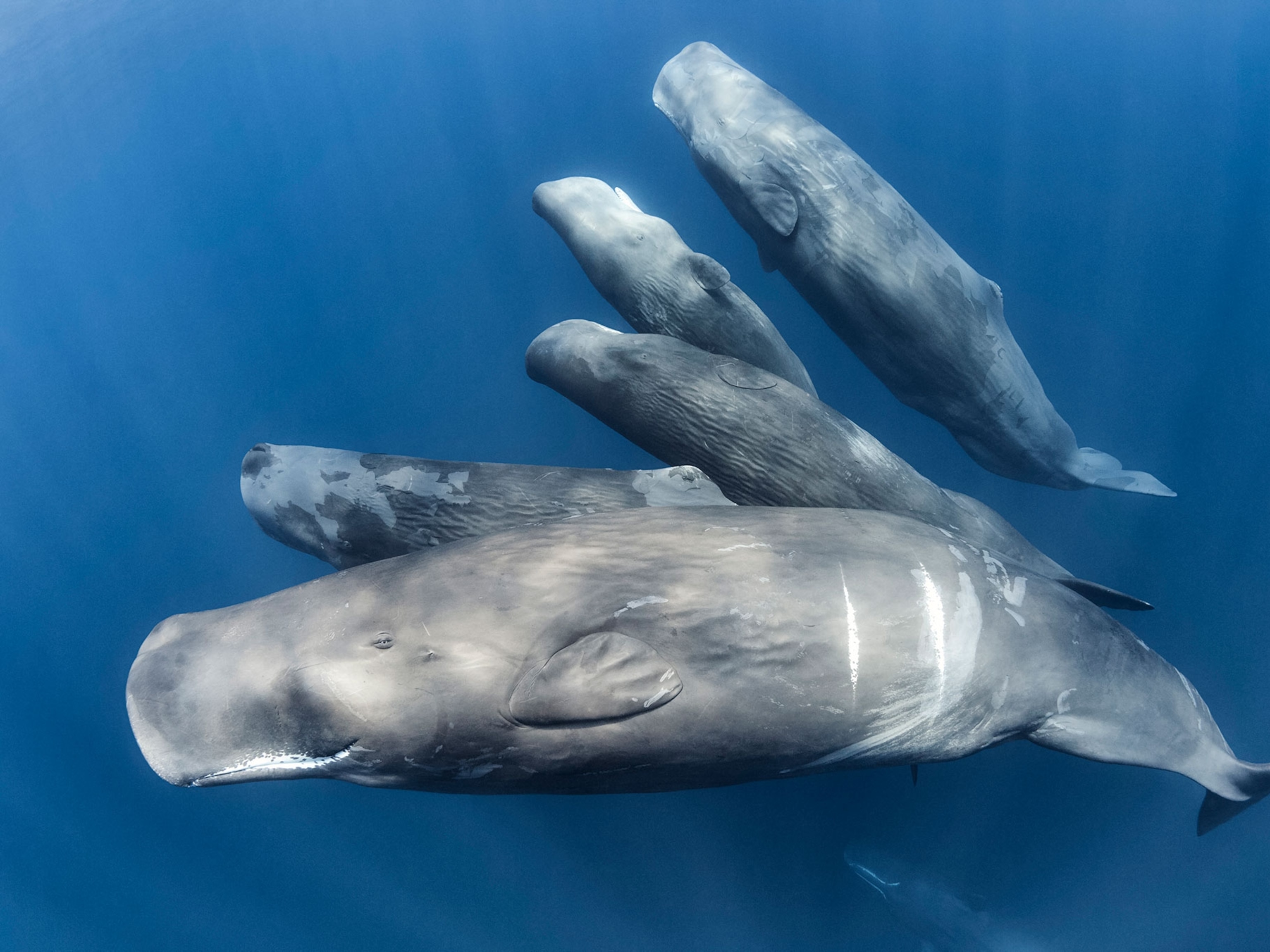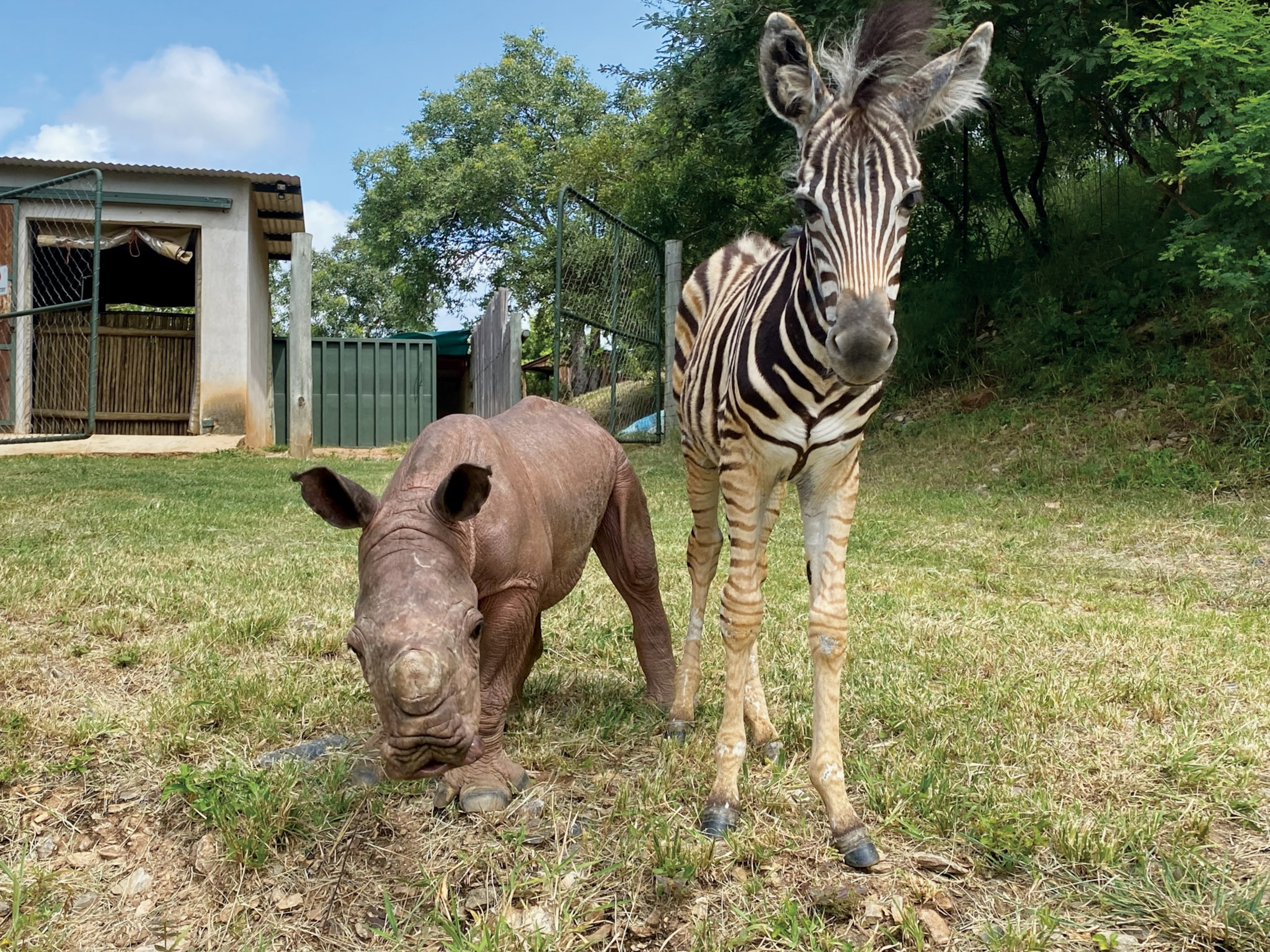
Rhinos Use Poop Piles Like a Social Network
Forget Facebook: Rhinos get their gossip by sniffing feces at a communal latrine, a new study says.
From the campfire to the water cooler, people have always gathered around to share the latest news. White rhinoceroses, it turns out, do the same thing—only their choice of meeting place is a giant pile of poop.
Chemical clues in white rhino feces provide information about age, sex, general health, and reproductive status to other rhinos that visit the communal latrine, also called a midden, a new study found.
“We think of dung as just a waste product, but it’s really a good way for animals to communicate. There’s a lot of information there that we haven’t taken advantage of,” says study leader Courtney Marneweck, an ecology Ph.D. student at the University of KwaZulu-Natal in South Africa. (See 15 moving pictures of rhinoceroses.)
Lots of animals can detect chemicals in urine and feces to learn what's going on with other members of their species. That’s why, for instance, dogs constantly sniff the fire hydrant.
What makes white rhinos different from a sniffing Fido is that rhino groups defecate in the same location.
Other species get their gossip from middens—especially mammals that live in large social groups like gazelles, monkeys, and rabbits—but the study is the first time the behavior has been confirmed in rhinos. (Read why cats like to poop on your bed.)
Faux Feces
Marneweck and colleagues tracked more than 200 individual white rhinos in South Africa from different populations and took samples of their poop after the animals visited their middens. This allowed the team to track exactly what individual contributed the sample. (See "Zoo Poo and Glitter Reveal Animal Health Secrets.")
Finding the middens was easy, since the hefty mammals trample grass along well-used paths and don’t travel far when nature calls. What's more, at 65 feet across, middens are "huge and hard to miss,” Marneweck says. (Surprisingly, she adds, middens don’t smell that bad: Rhino dung is mostly desiccated grass.)
The scientists then analyzed the chemical makeup of the rhinos' dung. They found that feces of various ages and sexes—such as young animals, dominant males, and females in estrus— carry different chemical cues.
Then, the scientists created fake poop from grass and mud and spritzed it with the same compounds found in the dung of these three different groups. They deposited this imposter dung in randomly selected middens and observed how dominant males responded to it.
The team found the males were very responsive to the fake dung that carried chemicals from females ready to mate. These males spent more time sniffing it than did other rhinos, visited the midden more frequently, and defecated on top of the experimental poop, according to the study, published January 11 in Proceedings of the Royal Society B.
This reaction shows that the male rhinos were gathering information from chemicals in the dung, Marneweck says.
Keeping Tabs
Middens provide many benefits to a group of animals, says Madlen Ziege, a Ph.D. student at the University of Frankfurt in Germany.
“It’s important that all members in a group are aware of what’s going on. If you know everyone's status, you don’t need to look for them or start fighting,” she says.
They’re also important for communicating between separate populations of the same species. Many middens, for instance, sit at the edge of a group’s territory and help reinforce its boundaries, according to Ziege.
There's more than just poop jokes to come out of the research—study leader Marneweck says that learning how white rhinos communicate could better help keep the behemoths alive. (See "Rare White Rhino Dies, Leaving Only Four Left on the Planet.")
The species, listed as near threatened by the International Union for Conservation of Nature, is under threat due to continued poaching.
Follow Carrie Arnold on Twitter.





